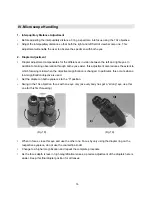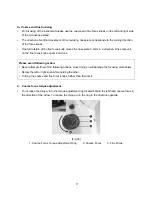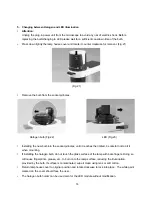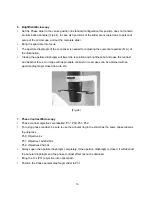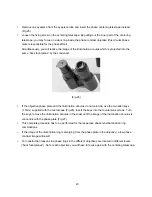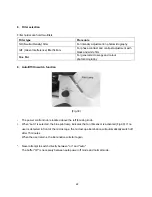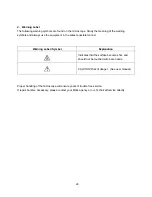
20
y
Remove one eyepiece from the eyepiece tube and insert the phase centering telescope instead.
(Fig.25)
y
Loosen the fixing screw on the centering telescope. By pulling out the inner part of the centering
telescope, you may focus on a dark ring inside the phase contrast objective (this circular phase
plate is responsible for the phase effect).
Simultaneously, you will realize the image of the illumination annulus which is projected into the
same “back focal plane” by the condenser.
(Fig.25)
y
If the objective phase plate and the illumination annulus do not coincide, use the two allen keys
(1.5mm) supplied with the microscope (Fig.26). Insert the keys into the countersunk screws. Turn
the keys to move the illumination annulus in the slider until the image of the illumination annulus is
concentric with the phase plate (Fig.27).
y
This complete procedure has to be performed for the respective phase lens/illumination ring
combinations.
y
If the image of the illumination ring is diverging from the phase plate in the objective, a low phase
contrast image will result.
y
For construction reasons the phase rings in the different objectives are located in different levels
(“back focal planes”). So for each objective you will have to focus again with the centering telescope.











